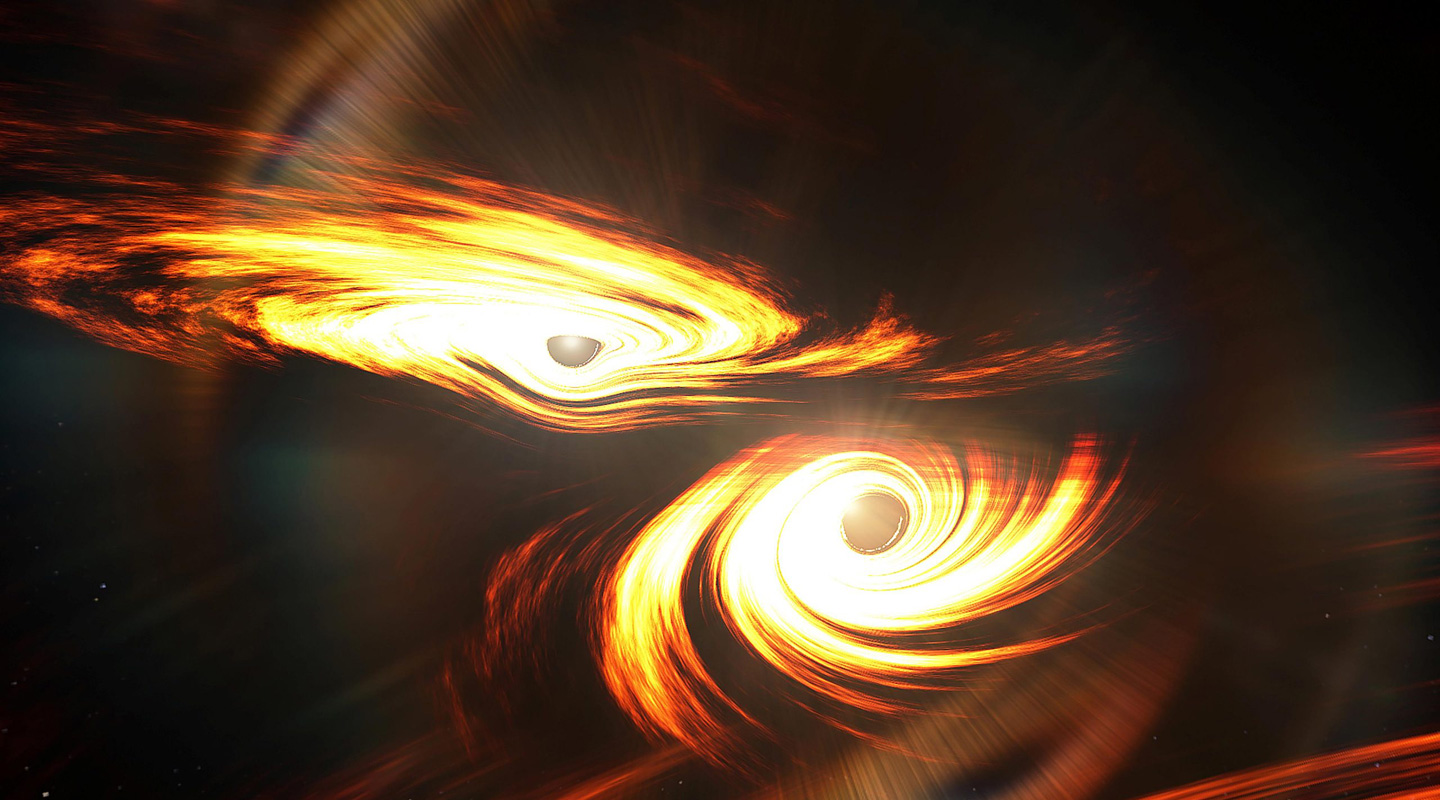Dear readers, With the launch of e-newsletter CUHK in Focus, CUHKUPDates has retired and this site will no longer be updated. To stay abreast of the University’s latest news, please go to https://focus.cuhk.edu.hk. Thank you.
Far Cry from Behemoth Black Hole

For untold ages, the universe has inspired in human feelings of awe, wonder and sublimity which spur the latter on to explore its most mysterious corners and unveil its full grandeur. With the ever-perplexing black holes, the most massive merger was detected earlier by the 1,200 scientists-strong Laser Interferometer Gravitational-wave Observatory Scientific Collaboration of which CUHK is a part, and its European counterpart named Virgo. This is the first time medium-sized black hole was discovered and, much to our delight, the discovery has dropped clues on how supermassive black holes come into being.
Black holes are eerie, dense regions of space-time from which nothing—not even light—can escape. Being incredibly dense, a black hole with the mass of the Sun would simply be about the size of Kowloon. Black holes can be divided into two types: one is those a few times the mass of the Sun that are corpses of stars collapsing under their own gravity. The other is supermassive ones with up to billions of times Sun’s mass that are located at the centre of most galaxies, including our Milky Way. Scientists had long conjectured the existence of a third, intermediate family of black holes that had remained elusive. Now the observation confirmed the educated guess and rewired the whole classification.
It was by the gravitational waves—the moans produced by the colliding bodies that we learnt that these comic titans once existed. It was revealed further that the black hole merger involved two black holes of approximately 85 and 66 times solar mass. With nine solar masses turned into gravitational waves, the fusion gave birth to a creature with 142 solar masses, falling in what many scientists had thought an impossible range and qualifying as a medium-mass black hole. On top of the collision, it was also thought that the two mammoths were themselves products of previous fusions, as black holes upwards of 65 Sun’s masses are considered too big to form from stellar collapse.
The group led by Prof. Tjonnie Li and Prof. Juan Calderon Bustillo of the Department of Physics was among the masterminds making sense of the wave signal. ‘Similar to the skeletons of dinosaurs, black holes allow us to do stellar archaeology, helping us understand how stars live and die,’ said Professor Calderon Bustillo. As pointed out by Professor Li, the discovery dovetails with the way we think supermassive black holes are formed. As the wave registered just the moment the final black hole was born, it’s still not clear what went before the merger. The grand jigsaw of the universe still awaits having its pieces fitted together by women and men willing to stretch their eyes and wits for divine revelations.